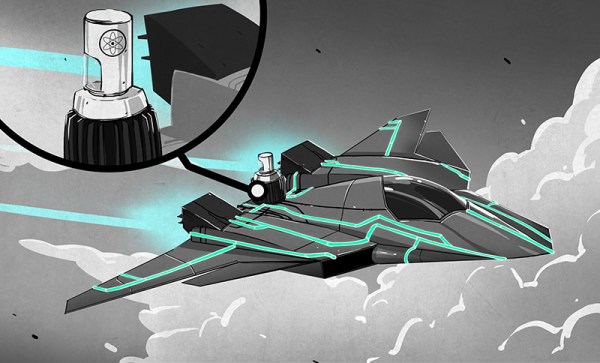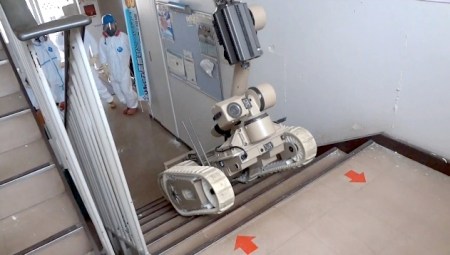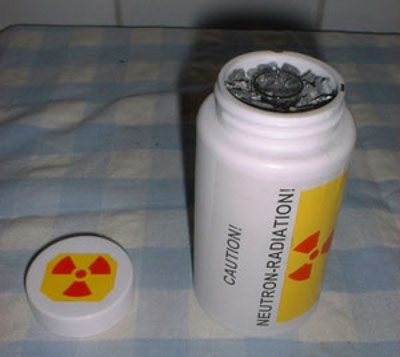At any given moment, several of the US Navy’s Nimitz class aircraft carriers are sailing the world’s oceans. Weighing in at 90 thousand tons, these massive vessels need a lot of power to get moving. One would think this power requires a lot of fuel which would limit their range, but this is not the case. Their range is virtually unlimited, and they only need refueling every 25 years. What kind of technology allows for this? The answer is miniaturized nuclear power plants. Nimitz class carriers have two of them, and they are pretty much identical to the much larger power plants that make electricity. If we can make them small enough for ships, can we make them small enough for other things, like airplanes?
nuclear42 Articles
Retrotechtacular: Breaking Atoms To Break The Ice
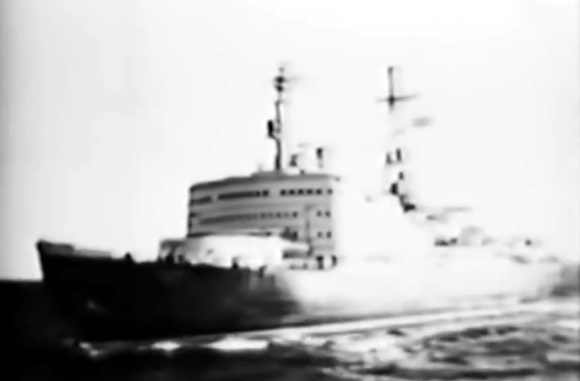
This documentary from 1959 gives a satisfyingly thorough look inside a nuclear powered icebreaking ship called Lenin. This actually set a couple of world’s-firsts: it was the first nuclear powered surface vessel and the first civilian vessel to be powered thusly.
The ship was built to clear shipping paths to the northern ports of Russia. Testing of both ice and models of the ship design point to the ability to break ice layers that are two meters thick. This requires a lot of power as ice-breakers generally use their hull shape and gravity to break the ice by driving up onto it to bend the ice to the breaking point. The Lenin achieved this power using its nuclear reactor to heat steam which drove electric generators. The energy produced drove three screws to power the vessel.
Of course this was back in the day when control panels were substantial, which you can get a peek at starting half-way through the twenty-minute film. This includes a demonstration of the ship’s network of radiation sensors which alert the control room, and sound a local alarm when they are triggered. During it’s 30-year operational life the vessel had a couple of accidents stemming from refueling operations. You can find more on that over at the Wikipedia page, but stick with us after the jump to see the vintage reel.
Continue reading “Retrotechtacular: Breaking Atoms To Break The Ice”
The Fukushima Robot Diaries
After the terrible tragedy in Fukushima, the cleanup and damage assessment has begun. A robot operator, known only as [S.H.] has decided to write a blog about their efforts. As pictured above, they are using iRobot models, including the [510 Packbot], and the [710 Warrior].
Since cleanup efforts started, [S.H.] was posting on his or her blog daily. After word of this blog started getting out via various social media outlets, the blog was mysteriously taken down. The blog was at times critical of elements of the cleanup effort, but it’s unknown why the disappearance happened. Efforts to reach [S.H.] were unsuccessfull according to [IEEE].
Fortunately, before the takedown, [IEEE]’s [Erico Guizzo] decided to make a copy of the posts. These have been translated into English and portions are now available at the link listed above. Be sure to check out robot training video after the break. Continue reading “The Fukushima Robot Diaries”
The DIY Nuclear Reactor
“Wednesday, I was arrested and sent to jail,” is what your blog might say if you decide to try and duplicate this project. You may, however, be fortunate to be still writing your blog, as ATTEMPTING TO BUILD YOUR OWN REACTOR can be quite dangerous. That’s what [Richard] did using household items such as clock fingers for Radium, and smoke detectors for Americium. After the radioactive elements were separated from their household “containers” and melted down, they created a small explosion on his stove.
This attempted experiment is based on one that was done by [David Hahn], AKA, “The Nuclear Boyscout”, in order to obtain his nuclear energy badge. For what it’s worth, [David] did attain the rank of Eagle Scout, however, he turned his parent’s house into a Superfund EPA cleanup site in the process.
The video after the break describes the process of making a reactor from household materials. This video may be entertaining, but duplicating it is not recommended (and would be somewhat expensive). Continue reading “The DIY Nuclear Reactor”
Transmitting Power And Data Through Thick Metal Enclosures
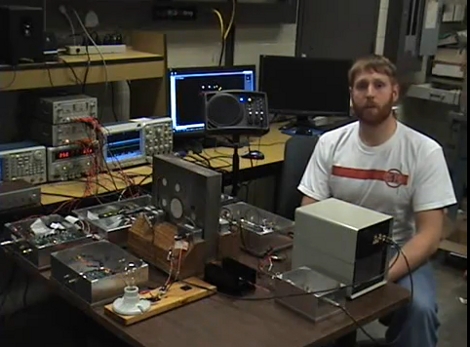
So let’s say you have a submarine, or a nuclear containment chamber which has walls made of thick metal. Now let’s say you want to transmit power or data through this wall. Obviously you’re not going to want to drill a hole since this wall is either keeping seawater out, or potential contamination in, but wireless signals aren’t going to travel well through dense metal. [Tristan Lawry’s] entry in the Lamelson-MIT Rensselaer Student Prize seeks to address this issue by using ultrasound waves to transmit data and power.
In the video after the break [Tristan] speaks briefly about his project, then demonstrates the transmission of power and digital audio simultaneously through a two-inch thick steel plate. This is accomplished with a set of piezo transducers attached to both the inside and outside of the plate. Communications originate by feeding electricity to one transducer, which sends ultrasonic vibrations through the material to be received by its counterpart on the other side. It’s easy for us to understand data transmission conducted in this manner, after all that’s how the knock block receives information. What we don’t understand is how it can “transfer large amounts of electrical power”. If you can explain it in layman’s terms please do so in the comments.
Continue reading “Transmitting Power And Data Through Thick Metal Enclosures”
Fusion, In My Backyard?!
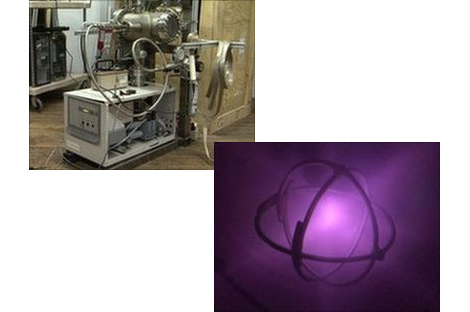
Here is the 32nd amateur fusion reactor built in a basement. [Mark Suppes] is right behind [Will Jack], the (then) 17 year old [Thiago Olson], and [Mileiux] in engineering a homemade nuclear reactor. By taking two light elements and colliding them under extreme speed and pressure, a heavier element and energy are produced.
[Mark’s] goal is to lasso in investors to earn enough money to build a larger Bussard Reactor, which will hopefully produce as much energy as it consumes. Free energy at only a couple million dollars; who wouldn’t pass up this opportunity?
[Thanks Imp]
Basement Fusion Reactor
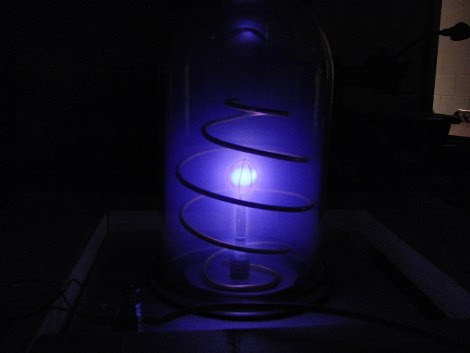
Do you ever wonder what projects your neighbors have going on in their basements? [Will Jack’s] neighbors might be surprised to find he’s building a fusion reactor. The first step toward completing a Farsworth-Hirsch Fusor is up and running. The picture above shows heated plasma contained in a magnetic field. Next he just needs to up the voltage and inject some deuterium.
Yeah right! Deuterium, aka heavy water, is extremely rare and very difficult to refine. If you’re not familiar with the substance, you should get your hands on the NOVA episode: Hitler’s Sunken Secrets.
We’re glad to see that [Will Jack] is donning a lead vest for protections. [Will O’Brien] cautioned us about the stray X-rays these things produce when he covered fusors back in 2007.

